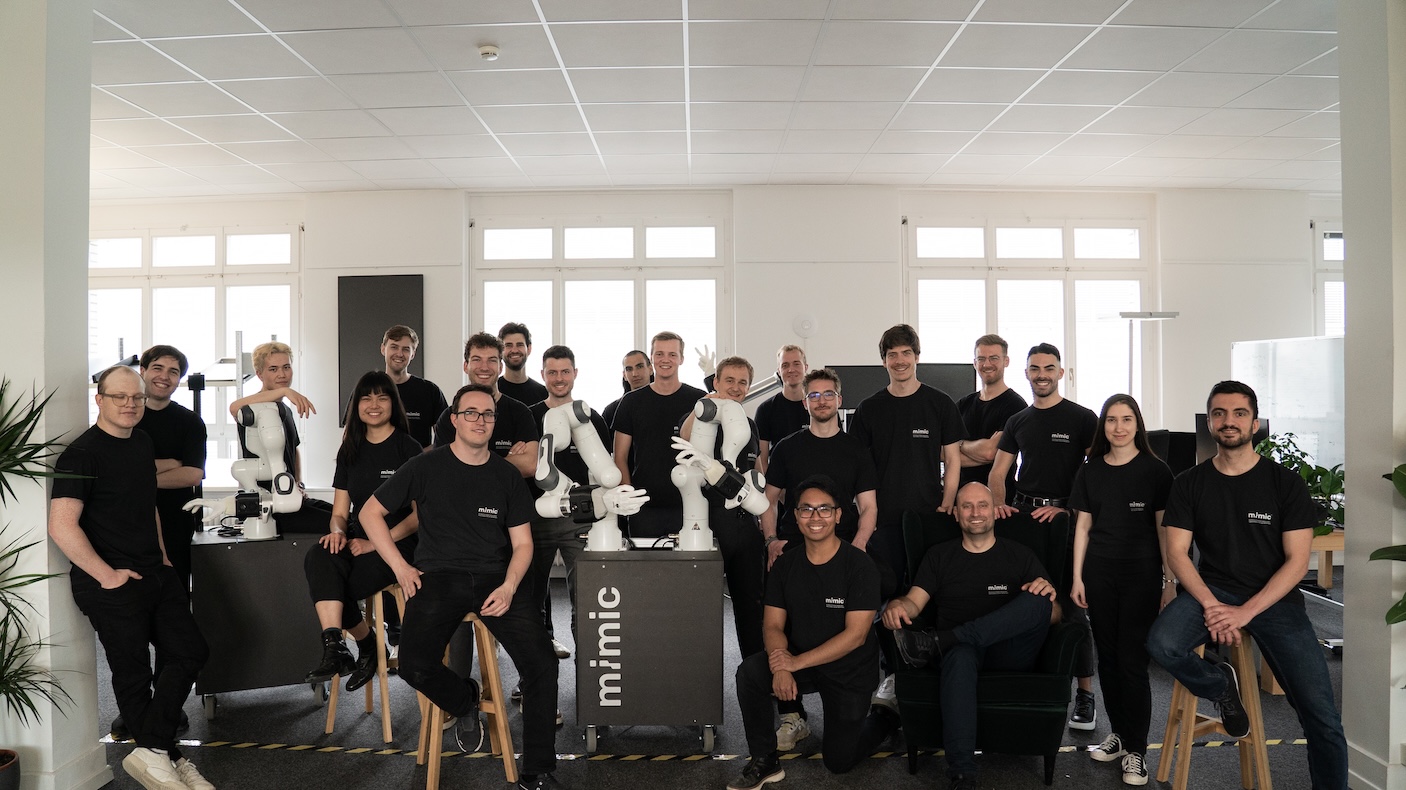One Way to Build and Lead Your Startup Team to Higher Profits
The Problem: Building a better “universal product”
Quantum computing, insurtech, digital health, climate tech, marketplace platforms, developer tools, education, the list goes on… No matter your focus, whether you’re a founder or an investor, you are selling the same product as everyone else: decision-making.
While this is true for any business from the back-of-napkin stage to global dominance, quality decision-making is especially important for early-stage startups. Pre-revenue and with little overall track record, your ability to prove that your team will make more good decisions than bad ones is key.
Add to that, the stakes of the decisions are higher. You’re just laying the foundations of your business development strategy, trying to find product-market fit, and building your company culture. Your future success will, without fail, somehow flow from the quality of the decisions you make now - no pressure!
The Solution: Question your hiring strategy
When trying to figure out how to deal with this, the initial thought may be to fill a leadership team with people who have a lot of similar experience. You can finish each other's sentences, make the same jokes, and act in unison to smash through walls on the way to success. But maybe that same team would save time, energy and money if they actively looked for disagreements in perspective. Does anyone have a bigger hammer? Is there a door? Anybody got a ladder and rope? Can we just walk around the wall?
In the end, though, early-stage investors don’t care too much about how you get around the wall. They just want to get in on the ground floor of startups with founders who are serious about building game-changing tech. They care about results. They care about the numbers.
So what do the numbers say about how to deal with that wall?
The Data: Non-homogenous teams make better decisions
First off, according to Cloverpop, teams make better decisions than individuals. But this effect is multiplied dramatically when the people in the teams are different from each other. This is slightly counterintuitive. Many would say that building a team with people who understand each other without even having to say anything makes it easier to make decisions…
…and they would be right. It is easier to make decisions when you aren’t faced with perspectives that run contrary to your own. But it doesn’t mean those decisions are better - or more profitable - for your business.

In fact, homogenous, all-male teams make better decisions than individuals 58% of the time. Compare this to teams that have been purposefully built to include perspectives from different age groups, genders and geographic backgrounds. These teams make better decisions than individuals 87% of the time. That’s an almost 20% gap which, in the end, translates into lost time and missed market opportunities.
But how to make all these different perspectives work together?
The Caveat: Leadership is the glue
Bringing so many different together people isn't easy. According to Forbes, having a mix of ages, genders, geographies, skills and experiences across your company can make communication more difficult and increase the risk of conflict. But conflict doesn't need to be bad.
Embrace it. Each conflict is an opportunity for your team to take itself to the next level, not simply an argument to be won. It is the role of leadership to set this tone.
There is no doubt that larger-than-life leaders (think Elon Musk and the late Steve Jobs) often have a very direct impact on their product. But you could argue that they really achieve so much success as entrepreneurs and disruptors because they do two things:
- Define and repeatedly communicate a clear vision and mission
- Build a culture that:
a. actively and purposefully questions the status quo
b. expects winning ideas to come from all levels of the organization
As stated above, this is a harder way to build a team. But it just happens to also be how you build a more profitable team. And, in the end, that is how the success of your business will be measured.
So again, from an investor’s perspective, it makes sense to bet on founders who actively encourage (respectful) disagreement and shine light on their blind spots. Those teams will make more informed decisions, more quickly find creative solutions to their problems, and be more likely to build companies that not only succeed, but thrive and dominate.
So how to do this?
The Easy Way: Including a range of perspectives in your decision-making early is simple and cheap
If you start from the very beginning to purposefully include a variety of perspectives in your decision-making process, it can be done with ZERO financial investment.
You can dive deeper into the topic by watching one of our workshops.

Here are some simple tips for how you, as a leader, can leverage the power of diverse perspectives and inclusive decision-making in your meetings. It all comes down to modeling best practices:
1. Send everyone the questions that need to be answered
We’ve all been there. We go to a meeting that is centered around a clearly important, but poorly defined topic. For 30 to 60 minutes, the usual people voice their opinions. At the end, many you are then left wondering what just happened.
Instead, write the meeting participants with a list of questions that should have answers by the time the meeting is over. This gives everyone a chance to gather their thoughts and bring specific contributions to the table. The knock-on effect is that the answer to the question “What did that meeting accomplish?” becomes much more clear.
2. Explicitly ask for everyone’s opinion
If there is not enough time for everyone to share their perspectives, then you either have too many people in the room or the discussion needs more time. Remember, the primary purpose of most meetings is to take advantage of the combined knowledge and experience of everyone in the room. From that, you can make the best decision possible.
Even if some people don't have anything to say, if you (as the leader of the group) explicitly ask, then you are implicitly signaling that you value every individual's opinion. This not only encourages those people to speak up later, but also sets an example for other leaders in your company.
3. Invite people to prove you wrong
Everyone hates being wrong. In fact, it’s often more important for us to not be wrong than it is to be right. But if you can push through that discomfort, then there are rewards on the other side!
In the end, the real world doesn’t care that much about your ego. What matters is: Is your company making good decisions? So explicitly invite your team to put your ideas to the test.
“I think we should do A, B, C because of X, Y, Z. But that’s just me. If someone has another thought, please convince me I'm wrong.”
Maybe you won’t be convinced, but by being publicly open to being proven wrong you encourage people to share their ideas. And who knows? Maybe in the process you’ll gain valuable perspective that will help you avoid bad decisions in the future.
4. Politely interrupt the interrupters
Another thing that often prevents people from sharing their ideas is that, for one reason or another, most meetings have at least one “interrupter” - I say this as a recovering interrupter. These people may not even be aware of this behavior, but as a leader you are in a position to gently redirect the conversation.
You can say, “I’m sorry Jim, we can come back to you in a second. But first I’d like to hear the rest of what John has to say,” or “Before we move on, I’d like to give Jane a chance to finish her point.”
It may be uncomfortable at first. But by modeling this behavior over time, it will become just another part of your company’s standard meeting etiquette.
The Bottom Line: Building diverse and inclusive teams is a win for everyone
Unless you find yourself in a sense8-style telepathic cluster (I binged some Netflix over the holidays), then you can’t be great at everything. But you can build a hiring strategy that sees variety as a value-add. If you then build a company culture where polite disagreement is encouraged, you will reap the rewards of better decision making throughout your organization. This then results in better morale, faster and more creative problem-solving, and - by extension - higher profits.
If you'd like to talk more about Diversity, Equity and Inclusion (DEI) in the workplace, find me on LinkedIn. To learn more about how the Speedinvest Platform+ team supports its founders to build winning teams of their own, feel free to reach out to our Head of People, Miriam Feyer.
Jump to some highlights in a video on the topic.
- What does the data have to say about the profitability of non-homogenous teams?
- How can I improve my team’s decision-making?
- Why does “diversity” make everyone so uncomfortable?
Learn more about the Speedinvest Platform+ team and sign up for our newsletters to get our exclusive content delivered straight to your inbox.












.svg)
